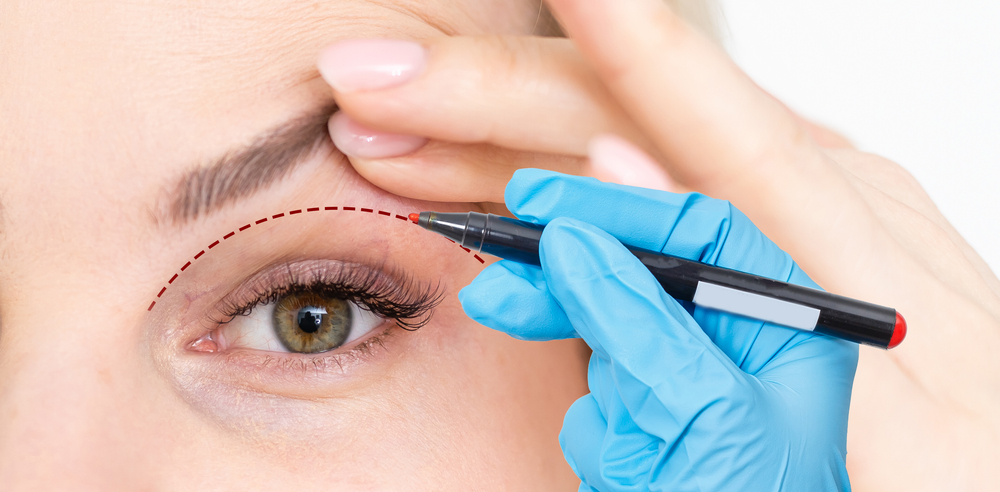
Blepharoplasty is a procedure that can enhance the appearance of the eyelids, restoring a more youthful and rested look. But beyond cosmetic improvements, it can also address functional issues that may arise from eyelid abnormalities. The decision to undergo such a procedure is significant and requires an understanding of what it entails, from the initial consultation to the recovery process.
What is Blepharoplasty?
Blepharoplasty, commonly referred to as eyelid surgery, is a corrective procedure that involves the removal or repositioning of skin, muscle, and sometimes fat from the eyelids. The operation can be performed on the upper eyelids, lower eyelids, or both. It's designed not only to improve the aesthetic appearance of the eyes but also to rectify functional problems.
Choosing to undergo blepharoplasty is a personal decision, and it's essential to do it for yourself, not to fulfill someone else's desires or to fit any sort of ideal image. A consultation with a board-certified plastic surgeon is the first step to understanding how this procedure can specifically help you and whether it aligns with your aesthetic or functional goals.
Common Conditions Addressed by Blepharoplasty
Blepharoplasty has become a sought-after procedure for a variety of conditions related to the eyelids. One common condition is ptosis, which is the drooping of the upper eyelid that can sometimes obstruct vision. This condition can be present at birth or develop with age and can significantly impact both the functionality and symmetry of your eyes.
Another frequent concern is dermatochalasis, an excess of skin on the eyelids that creates a heavy, hooded appearance. This can be particularly troublesome as it not only alters your appearance but can also interfere with peripheral vision. Additionally, blepharoplasty can address bags under the eyes, which are often a result of bulging fat pads, giving a tired and aged look even when you're well-rested.
For some individuals, the motivation behind seeking blepharoplasty is not always about rectifying a problem but rather enhancing what is already there. By creating a more defined eyelid crease or removing puffiness, the eyes can seem larger, brighter, and more alert.
How Blepharoplasty Works
The operation is typically performed on an outpatient basis, meaning you'll be able to go home the same day. Local anesthesia with sedation or general anesthesia may be used depending on the complexity of the surgery and your comfort level.
For upper eyelid surgery, the incision is usually made within the natural crease of the eyelid, allowing the resulting scar to be well-concealed when the eye is open. The surgeon will then remove or reposition excess skin, muscle, and fat before carefully closing the incision with fine sutures. In the case of lower eyelid surgery, the incision may be made just below the lash line or inside the eyelid, known as a transconjunctival incision, which leaves no visible external scar.
The entire procedure can take anywhere from one to three hours, depending on whether both upper and lower eyelids are being addressed and the complexity of the individual case. It's a delicate operation that requires precision and an artistic eye to achieve a natural and aesthetically pleasing outcome. Your surgeon will provide detailed pre-operative and post-operative instructions to ensure the best possible results.
Recovery and Post-Operative Care After Blepharoplasty
The recovery period following blepharoplasty is a critical time to ensure the best possible outcome. Initially, you may experience bruising, swelling, and discomfort, but these symptoms should diminish within the first week or two. Cold compresses and medication prescribed by your surgeon can alleviate some of these effects.
It's important to follow your surgeon's advice regarding post-operative care. This may include keeping your head elevated for several days, using lubricating eye drops, and avoiding activities that could strain your eyes. You'll also be advised to protect your eyes from the sun and wind during the healing process.
In most cases, you can return to work and resume normal activities within a week or two, but complete healing may take several months. During this time, the scars should gradually fade and become less noticeable. Adhering to your surgeon's instructions and attending follow-up appointments is crucial to monitor your progress and address any concerns that may arise.
Is Blepharoplasty Right for You?
Blepharoplasty can be a transformative procedure with both aesthetic and functional benefits. However, as with any surgery, it's important to consider your motivations, the potential risks, and the recovery process. Consulting with a board-certified plastic surgeon is the best way to determine if blepharoplasty is the right choice for you. They can provide personalized advice based on your unique anatomy and desired outcomes.
If you're troubled by the appearance or functionality of your eyelids and believe that blepharoplasty may be the solution, take the next step towards rejuvenating your look and improving your vision. Schedule a consultation with Rich & Humenansky Plastic Surgery of the Face & Body at our office in Columbia, South Carolina. Call (803) 799-3223 to book an appointment today.








